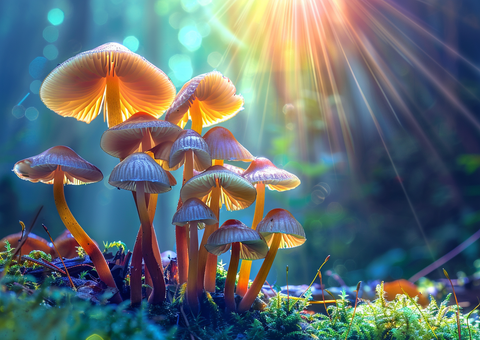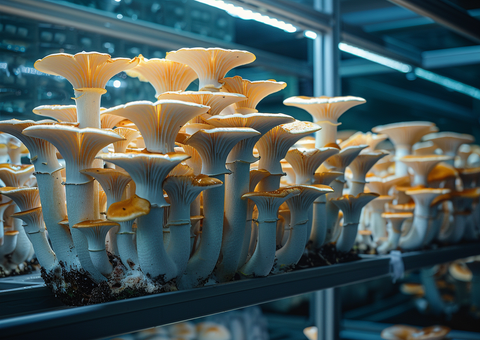
Mushrooms, the fruiting bodies of fungi, have fascinated cultivators and chefs alike with their diverse flavors and textures. Unlike plants, mushrooms do not rely on photosynthesis, leading to common misconceptions about their need for light. This post goes over the role of light in mushroom growth, particularly for indoor cultivation, clarifying what kind of light is necessary, optimal light cycles, and other essential insights.
Understanding Mushroom Biology
To comprehend mushrooms' light needs, it's crucial to grasp their biological makeup. Mushrooms are part of the fungi kingdom, obtaining nutrients through saprotrophic nutrition—breaking down organic matter. This process does not require light, fundamentally differentiating mushrooms from plants that need sunlight for photosynthesis.
The Role of Light in Mushroom Cultivation
Light, albeit not essential for the metabolic processes of mushrooms, plays a significant role in their growth cycle. It primarily influences the direction of growth, guiding the mushroom caps to develop upwards and aiding in the triggering of fruiting body formation. However, mushrooms require far less light compared to plants, making them ideal for indoor cultivation where light conditions can be easily controlled.
Ideal Light Conditions for Indoor Mushroom Growth
For most mushroom varieties cultivated indoors, indirect light or low-level artificial light suffices. Mushrooms like Shiitake, Oyster, and Button can thrive under these conditions, showing no significant benefit from strong, direct light.
Type of Light: LED or fluorescent lights are commonly used for indoor mushroom cultivation. These sources provide a broad spectrum of light, mimicking the natural conditions under which mushrooms grow in the wild. Blue light spectrum (around 480 nm) is particularly beneficial, promoting better yields and more robust mushroom development.

Light Cycles: Mushrooms do not require long periods of light. A daily exposure of 4 to 12 hours to indirect sunlight or artificial light is generally sufficient. It’s important to maintain a consistent light cycle, as erratic lighting can stress the mycelium (the vegetative part of the fungus), leading to poor fruiting body development.
Practical Tips for Growing Mushrooms Indoors
- Choose the Right Environment: A space with indirect sunlight, such as a room with north-facing windows, can provide the ideal conditions for mushroom cultivation. If such natural light is not available, supplement with artificial lighting, keeping the intensity low.
- Monitor Humidity and Temperature: While light plays a role in mushroom cultivation, maintaining the correct humidity and temperature is paramount. Most mushrooms thrive in high humidity (above 90%) and at temperatures between 55°F and 75°F (13°C to 24°C).
- Experiment with Light Sources: Depending on the mushroom species, experimenting with different light sources and intensities can optimize growth. Start with the general guidelines provided and adjust based on the specific needs of your mushrooms.
Common Mistakes to Avoid
While focusing on light conditions, cultivators should avoid overlooking more critical factors such as substrate quality, humidity, and temperature. Overemphasizing the need for light can detract from these essential growth requirements.
In the world of mushroom cultivation, light plays a supportive rather than a central role. For those growing mushrooms indoors, understanding and implementing the right light conditions—type of light, light cycles, and intensity—can enhance the quality and yield of your harvest. Remember, the secret to successful mushroom cultivation lies in balancing all environmental factors, with light being just one piece of the puzzle.
